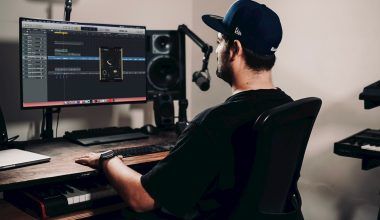You’ve just finished recording your latest track. The beat is perfect, the lyrics are on point, and you’re ready to share it with the world. But wait — how do you actually get your music out there? This is where music distribution comes in. If you’re wondering, “What is music distribution?”, you’re in the right place. This guide will explain everything you need to know in plain, simple language.
What Exactly Is Music Distribution?
At its core, music distribution is the process of getting your music to listeners. It involves sending your songs to streaming platforms like Spotify, Apple Music, Amazon Music, and others. In the past, music distribution was about getting CDs or vinyl records into physical stores. Today, it’s mostly about digital distribution — ensuring your music is available online for people to stream or download.
Why Is Music Distribution Important?
If you’re an artist, you’ve probably dreamt of people all over the world listening to your music. But without music distribution, that’s nearly impossible. Distribution acts as the bridge between you, the artist, and your potential audience. Whether you’re an independent musician or signed to a label, music distribution ensures your tracks reach as many ears as possible.
How Does Music Distribution Work?
Let’s break it down into simple steps:
- Create Your Music: This includes recording, mixing, and mastering your tracks to ensure they’re polished and professional.
- Choose a Distributor: There are several digital music distributors like TuneCore, DistroKid, and CD Baby that help artists upload their music to streaming platforms.
- Submit Your Tracks: You upload your music, provide metadata (song titles, artist name, album art), and select release dates.
- Music Goes Live: Your songs are made available on platforms like Spotify, YouTube Music, and more.
- Earn Royalties: When people stream or purchase your music, you earn money. Your distributor collects these royalties and pays you.
Types of Music Distribution
There are two main types of music distribution:
- Digital Distribution: This focuses on streaming and downloads. It’s the most common type of distribution today.
- Physical Distribution: Though less common, some artists still distribute CDs, vinyl records, or even cassette tapes for fans who prefer physical formats.
Key Platforms for Digital Music Distribution
Digital music distribution puts your music on platforms that listeners use daily. Here are some of the top platforms:
- Spotify: The leading streaming platform for music worldwide.
- Apple Music: Known for its high-quality sound and integration with Apple devices.
- YouTube Music: Great for music videos and songs.
- Amazon Music: Popular for its wide reach.
- Deezer and Tidal: Smaller platforms with dedicated audiences.
Choosing the Right Music Distributor
Not all distributors are the same. Here’s what to look for when choosing one:
- Cost: Some distributors charge a flat fee, while others take a percentage of your earnings.
- Features: Look for extra perks like playlist pitching, marketing tools, and detailed analytics.
- Ease of Use: Choose a platform that’s easy to navigate.
- Customer Support: Reliable support can save you headaches down the road.
Popular distributors include:
- TuneCore
- DistroKid
- CD Baby
- AWAL (Artists Without A Label)
How to Make the Most of Music Distribution
Music distribution doesn’t end with uploading your tracks. Here’s how to maximize your reach:
- Promote Your Music: Use social media, email newsletters, and live performances to let people know about your release.
- Engage with Fans: Respond to comments, share behind-the-scenes content, and build a connection with your audience.
- Collaborate with Playlists: Getting your song added to playlists can boost streams significantly.
Common Mistakes to Avoid
- Skipping Metadata: Incorrect or missing metadata can delay your release or cause confusion.
- Ignoring Promotion: Even the best song won’t succeed without proper promotion.
- Not Reading the Fine Print: Understand the terms and conditions of your distributor.
Conclusion
Music distribution is a crucial step in sharing your music with the world. Whether you’re a budding artist or an experienced musician, understanding how distribution works can help you reach a wider audience. Remember, it’s not just about uploading your songs; it’s about creating a strategy to connect with your listeners. Now that you know what music distribution is, it’s time to take the next step and let your music be heard.
For further reading, explore these related articles:
For additional resources on music marketing and distribution, visit DMT Records Private Limited.






